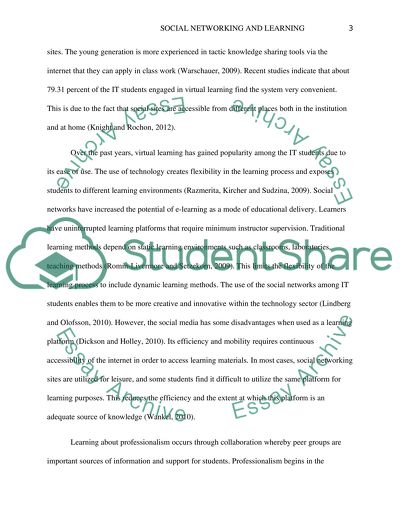Cite this document
(Social Networking and Learning Assignment Example | Topics and Well Written Essays - 1907 words, n.d.)
Social Networking and Learning Assignment Example | Topics and Well Written Essays - 1907 words. Retrieved from https://studentshare.org/education/1602024-the-use-of-social-networking-to-facilitate-learning-for-cput-undergraduate-it-students
Social Networking and Learning Assignment Example | Topics and Well Written Essays - 1907 words. Retrieved from https://studentshare.org/education/1602024-the-use-of-social-networking-to-facilitate-learning-for-cput-undergraduate-it-students
(Social Networking and Learning Assignment Example | Topics and Well Written Essays - 1907 Words)
Social Networking and Learning Assignment Example | Topics and Well Written Essays - 1907 Words. https://studentshare.org/education/1602024-the-use-of-social-networking-to-facilitate-learning-for-cput-undergraduate-it-students.
Social Networking and Learning Assignment Example | Topics and Well Written Essays - 1907 Words. https://studentshare.org/education/1602024-the-use-of-social-networking-to-facilitate-learning-for-cput-undergraduate-it-students.
“Social Networking and Learning Assignment Example | Topics and Well Written Essays - 1907 Words”, n.d. https://studentshare.org/education/1602024-the-use-of-social-networking-to-facilitate-learning-for-cput-undergraduate-it-students.


